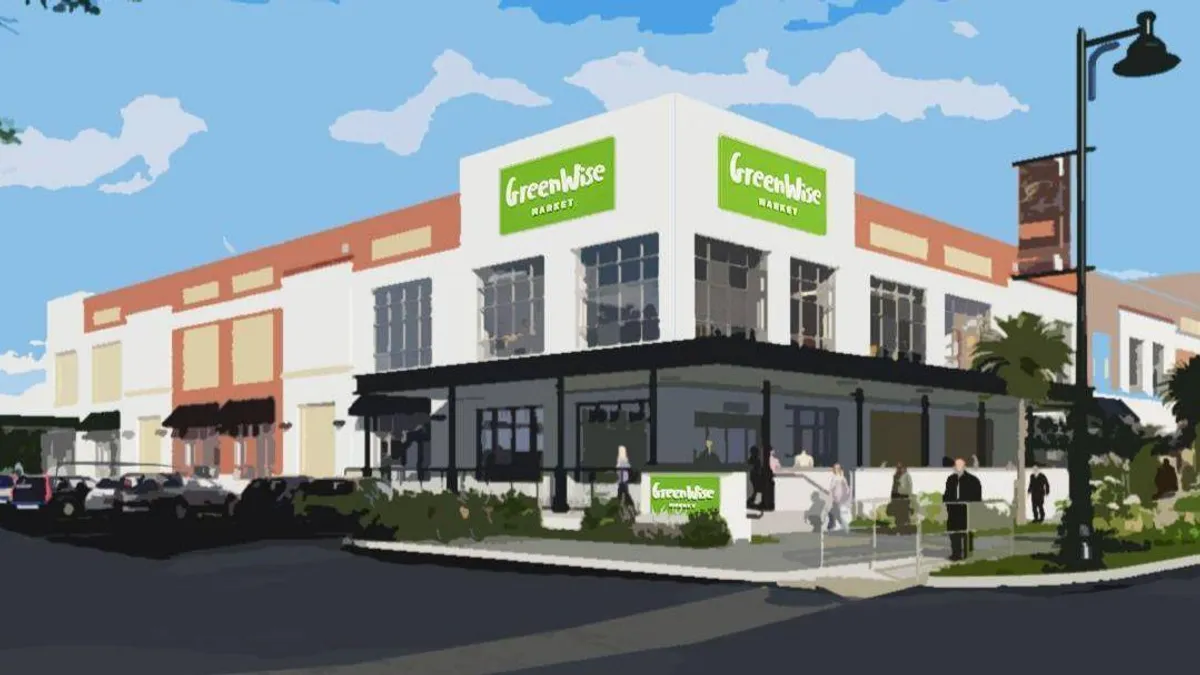Dive Brief:
- GreenWise Market, a chain of small-format specialty grocery stores operated by Publix, has generated more foot traffic at every location in Florida throughout 2022 on a year-over-year basis even as visits to the retailer’s traditional supermarkets in the state have consistently declined by the same measure, according to a recent report from data analysis firm Placer.ai.
- Shoppers also tend to stay longer in GreenWise stores than they do at standard Publix stores, Placer.ai found.
- Despite the apparent success Publix has had in engaging shoppers with its GreenWise concept, the brand represents only a tiny fraction of the approximately 1,300 stores that comprise the grocer’s overall footprint.
Dive Insight:
While Publix’s GreenWise stores look to be a hit with customers, the retailer seems to have reduced its focus on the alternative format at the same time it steps up attention on other avenues of growth, such as expanding its fleet of conventional grocery stores into Kentucky.
Publix, which debuted the first GreenWise store in October 2018, currently runs just seven GreenWise stores in its home state of Florida, where it has more than 800 traditional supermarkets. The newest store in the specialty chain opened in Tampa, Florida, in August 2021.
The only GreenWise store outside Florida, in the Birmingham, Alabama, suburb of Mountain Brook, opened in mid-2019. Publix also ran GreenWise stores in Georgia and South Carolina, but decided to pull the format out of those states, according to local news reports.
GreenWise stores, which typically occupy around 25,000 square feet, have a heavy focus on organic and prepared foods and are aimed at “health-conscious and gourmet foodies alike,” according to Publix. The locations feature a variety of “experience zones” that focus on items like meats smoked in-store, sausages made on the premises, gourmet sandwiches and burrito bowls. The concept also incorporates an area where shoppers can buy wine, beer or coffee to drink while they walk the aisles.
While Publix may have elected to open relatively few GreenWise stores, at least so far, the format appears to be a winner with shoppers. For example, Placer.ai found that GreenWise stores in Florida saw foot traffic rise 6.4% during September compared with that month in 2021 at the same time as traffic at traditional Publix stores in the state fell 3.9%. Monthly visits to Florida GreenWise locations were up by double digits in June, July and August even as Publix stores in the state fell.
Placer.ai’s data, released earlier in November, also shows that people spend more time in GreenWise stores than in traditional Publix stores located nearby. The median dwell time at the GreenWise location in Odessa, Florida, for example, was 28 minutes in the third quarter of 2022, while the comparable figures for three Publix stores located were 26, 25 and 24 minutes, respectively, according to the report.
“Publix is setting GreenWise apart and offering customers a premium grocery experience without impacting the wider Publix brand,” Placer.ai said.
The report, which examined the benefits of small-format stores, also found that Target has had success drawing shoppers to the more than two dozen small-format stores the retailer has built near college campuses. Those stores saw foot traffic that was up 35.7% during the third quarter compared with the same period in 2019, while traffic at Target’s standard locations rose 15.1% using the same measure, according to Placer.ai.
In addition, smaller-format stores run by DSW Shoe Warehouse and Macy’s have also resonated with shoppers in recent years, Placer.ai said in its report.
Placer.ai said that retailers can leverage small-format stores to target a specific demographic, offer a personalized experience and experiment with their brand.
“Small-format stores can also serve as fulfillment centers for click-and-pay shopping and as a location for returns, all while fostering brand awareness and customer engagement,” the data firm noted. “And thanks to their smaller size, these stores can help companies expand their reach in urban centers and other highly-priced real estate markets while lowering overhead costs.”









